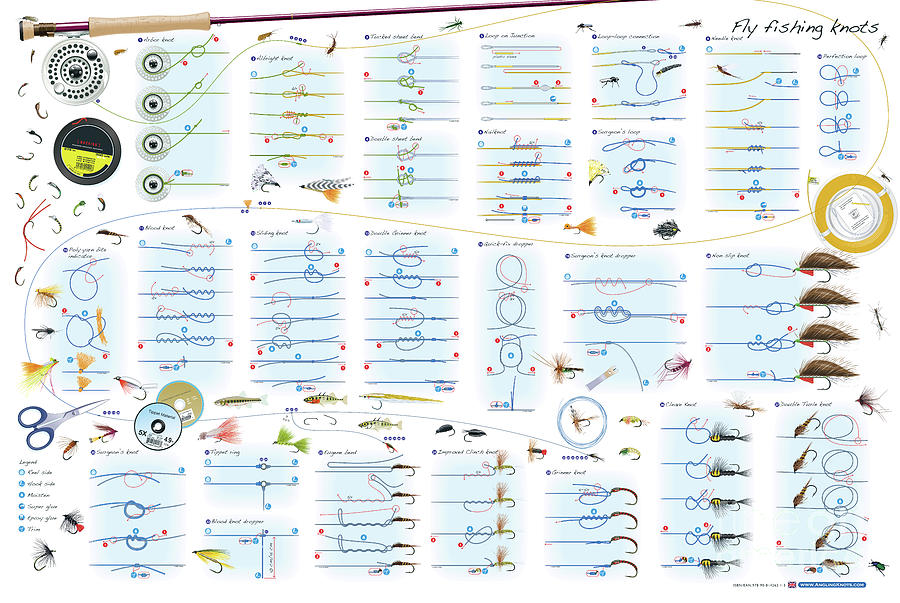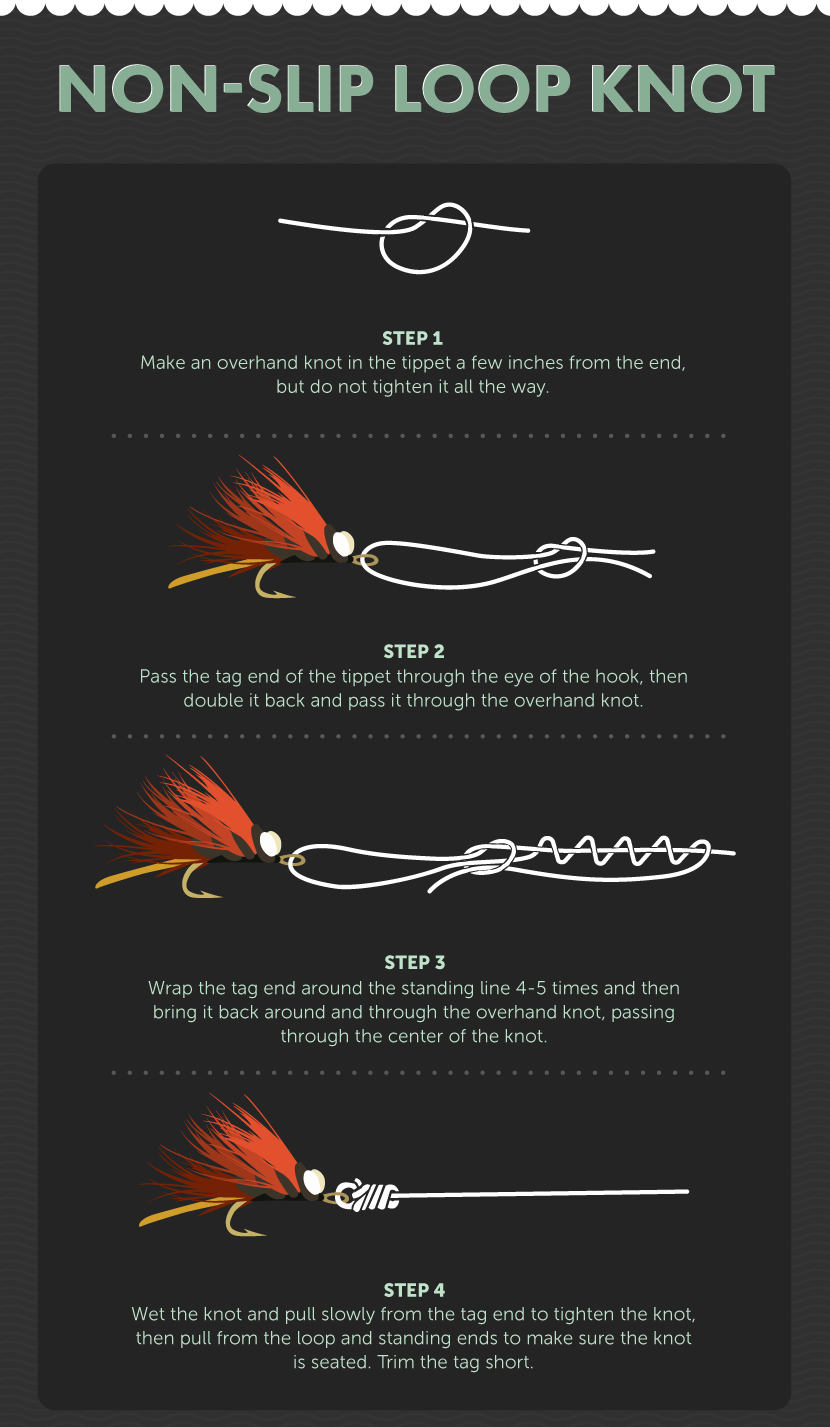Fly fishing is not just a recreational activity, it’s a true art form. If you’re an avid angler, you know that proper technique and skill are essential to success on the water. And one crucial aspect of fly fishing that should never be overlooked is mastering the various knots used in this sport.
The Importance of Fly Fishing Knots
As a fly fisherman, your knots are your lifelines. They are what connect your fishing line to your fly, and if they fail, you risk losing the fish of a lifetime. Being proficient in tying knots not only ensures that your fly is securely attached but also allows you to manipulate your line for various casting techniques.
 One of the most common and versatile knots in fly fishing is the non-slip loop knot. This knot allows your fly to move more freely in the water, imitating the natural movement of insects and increasing your chances of provoking a strike. It’s a relatively simple knot to tie, yet it offers excellent strength and reliability.
One of the most common and versatile knots in fly fishing is the non-slip loop knot. This knot allows your fly to move more freely in the water, imitating the natural movement of insects and increasing your chances of provoking a strike. It’s a relatively simple knot to tie, yet it offers excellent strength and reliability.
Another essential knot for fly fishing is the clinch knot.
 The clinch knot is commonly used to secure the fly to the leader, and it’s known for its simplicity and strength. It’s crucial to tie this knot correctly, ensuring that it doesn’t slip or come undone during the fight with a fish. Remember to moisten the knot before pulling it tight to prevent friction and heat, which could weaken the line.
The clinch knot is commonly used to secure the fly to the leader, and it’s known for its simplicity and strength. It’s crucial to tie this knot correctly, ensuring that it doesn’t slip or come undone during the fight with a fish. Remember to moisten the knot before pulling it tight to prevent friction and heat, which could weaken the line.
Practice makes perfect when it comes to tying knots, so don’t be afraid to spend time honing your skills. Many fly fishermen carry a small spool of light-colored monofilament or fluorocarbon line specifically for knot practice. This allows them to focus solely on perfecting their technique without wasting valuable fishing line.
Learning Resources for Fly Fishing Knots
 If you’re looking to expand your knowledge of fly fishing knots, there are several excellent resources available. Websites like Animated Knots and Grog provide step-by-step instructions on how to tie various knots, specifically tailored to fly fishing. These resources often include videos, diagrams, and detailed explanations to ensure you understand the mechanics behind each knot.
If you’re looking to expand your knowledge of fly fishing knots, there are several excellent resources available. Websites like Animated Knots and Grog provide step-by-step instructions on how to tie various knots, specifically tailored to fly fishing. These resources often include videos, diagrams, and detailed explanations to ensure you understand the mechanics behind each knot.
Books and magazines dedicated to fly fishing are also valuable sources of information. They often feature articles and tutorials on knot tying, along with stunning photography that showcases the artistry of this sport. These publications can serve as both educational tools and sources of inspiration.
Never Underestimate the Power of Proper Knot Tying
 When it comes to fly fishing, every detail matters. The quality of your knots can mean the difference between landing trophy-sized fish or leaving the river empty-handed. So, take the time to perfect your knot-tying skills and experiment with different knots for various fishing situations.
When it comes to fly fishing, every detail matters. The quality of your knots can mean the difference between landing trophy-sized fish or leaving the river empty-handed. So, take the time to perfect your knot-tying skills and experiment with different knots for various fishing situations.
Remember, practice and repetition are key to building muscle memory and ensuring that you can tie your knots confidently and efficiently on the water. With time and dedication, you’ll become a knot-tying maestro, and your fly fishing endeavors will reach a whole new level.
 So, the next time you head out for a day of fly fishing, take a moment to appreciate the remarkable artistry and skill involved in tying those intricate knots. And rest assured knowing that your attention to detail will pay off when you successfully hook that elusive trophy fish.
So, the next time you head out for a day of fly fishing, take a moment to appreciate the remarkable artistry and skill involved in tying those intricate knots. And rest assured knowing that your attention to detail will pay off when you successfully hook that elusive trophy fish.